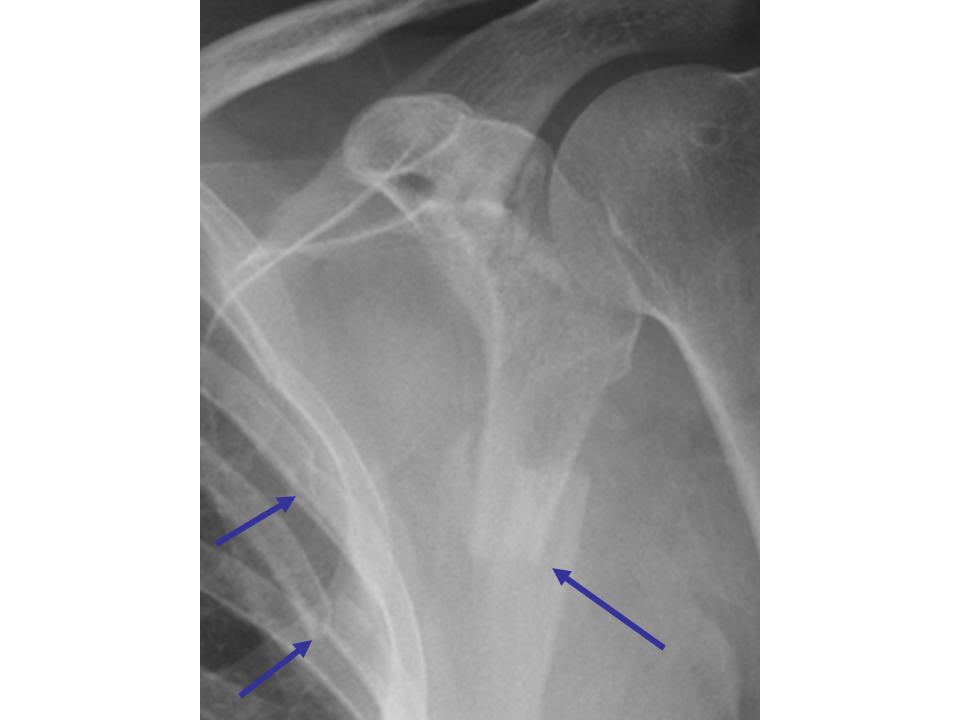Shoulder Case 2 ED Management
Scapula Fracture
ED Management

Initial management should focus on diagnosing the potentially more severe concomitant previously mentioned injuries. Definitive management of scapula fractures should be delayed until this is complete.
The vast majority of scapular fractures are treated non operatively. Closed reduction is usually not possible. Treatment consists of a sling and early range of motion. Most fractures heal by 6 weeks.
However, if an "operative" fracture is treated non operatively, abductor weakness and subacromial impingement may develop. Consider surgical management for significantly displaced fractures. Glenoid fossa fractures or rim fractures that are displaced >10mm or involve >25% of the articular surface may require surgery. Extra-articular fractures may require surgery if the acromion is depressed into the subacromial space, or if angulation or displacement is severe. Concomitant fractures of the scapular neck and clavicle (or other "double disruptions") can result in a "floating shoulder" and require surgical fixation.